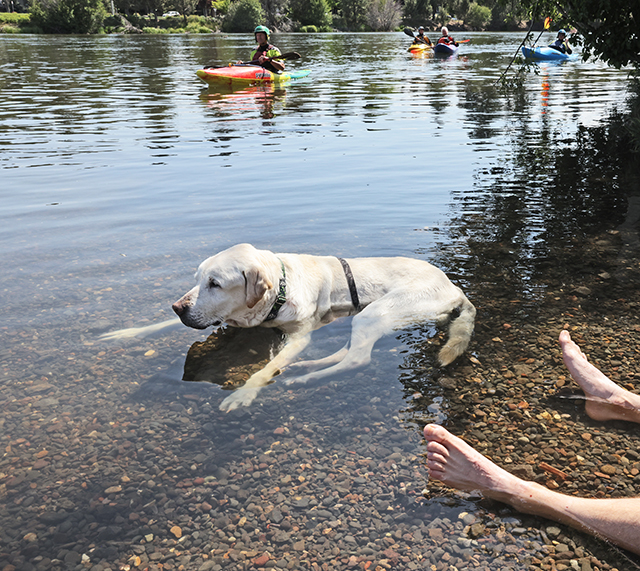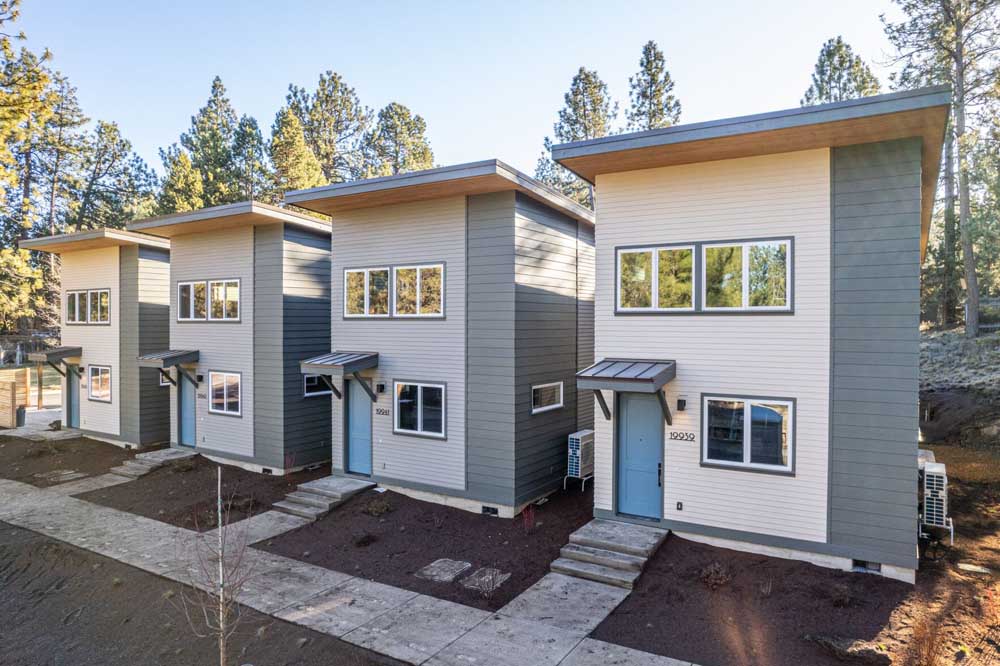Local athletes use altitude training
Published 5:00 am Thursday, July 26, 2012
Leading up to the Olympic trials earlier this year, local running star Max King slept in an altitude training tent almost every night. The tent fits over a mattress in a spare room of his house, next to his treadmill and his stock of running shoes.
Altitude training — living, or at least sleeping, for weeks or months at high altitude, say 8,000 feet — trains the body to adapt to a relative lack of oxygen.
True altitude training, such as moving to the mountains of Colorado for several weeks, can be simulated to some extent by using an altitude tent in which an athlete breathes air that’s been deprived of some oxygen.
When people inhale fewer molecules of oxygen per breath, the body releases extra erythropoietin, or EPO, a hormone that stimulates the production of more red blood cells. Oxygen binds to red blood cells to get to the muscles. Having more red blood cells allows more oxygen to reach the muscles, thus improving athletic performance.
The effects can linger a few weeks after altitude training ends.
For some time in the 1990s, using the tents was controversial because of the boost in EPO. EPO is the same hormone that some athletes have used as a performance-enhancing drug. But living at high altitude or traveling to training camps in the mountains was always a legal and natural way to stimulate EPO, and it was difficult to discern if an athlete had traveled or slept in a tent. Many asked whether it even mattered. That controversy has generally passed and altitude tents are widely accepted in the United States.
A revolutionary concept
In 1997, Drs. Ben Levine and Jim Stray-Gunderson of the Institute for Exercise and Environmental Medicine in Dallas published a landmark study that revolutionized how endurance athletes trained.
Their study said living at high altitudes and traveling daily to lower elevations for intense training could boost performance by as much as 3 percent.
They created a “live high, train low” training mantra, a new way to improve endurance sports performance.
It meant moving to places such as Colorado or Utah, where a person can live in the mountains and drive downhill, where they can maximize a workout. Because there’s less oxygen for the body to work with at a high altitude, training there gets scaled back. At high altitudes, an athlete can’t push his body as hard, can’t train his muscles to work as rapidly as necessary for competition.
Geographically relocating to “live high, train low” can be “very expensive and logistically often a real pain,” said XC Oregon Director JD Downing, who coaches elite adult cross-country skiers. Altitude training periods need to be at least three to four weeks long to provide lasting benefits, he said, and the more time spent at an ideal altitude — 7,000 to 8,500 feet — the better the benefits.
“We’d like to do them more often, but cost and missed work time has been the biggest impediment to XC Oregon skiers doing these types of camps. Over the past 15 years we’ve only had a handful of skiers ever do them,” he said.
Fortunately, “Central Oregon has a good enough altitude mix for many workout locations — 2,000 to 7,500 feet,” Downing said. “We seem to be able to shortcut the process a little bit just by moving workouts around the region as much as possible.”
On the other hand, some athletes use tents to simulate the effects of high altitude. Tents, or rather, the air pumped in from an altitude generator, make “live high, train low” concepts more convenient and feasible. After sleeping all night at the equivalent of 8,000 feet, a Bend athlete can step out in the morning and exercise at 3,600 feet.
King first tried an altitude tent during the three months leading up to a U.S. Cross Country Championship race in 2006.
“I had a phenomenal race. That started it,” he said. A couple of years later, his racing life justified buying a tent, he said. He figured he only had to improve a little bit to win back the $1,500 cost of the tent.
He believes altitude training has helped him run faster in both high- and low-altitude races. It also has made a difference in how he feels at high races such as the TransRockies race in Colorado’s mountains. Since he’s been altitude training, he’s experienced fewer side effects of altitude — nausea, appetite problems, headaches — at that event.
“When you include everything that enhances performance, you reach your potential,” he said. “It’s one piece of the pie.”
An imperfect tool
But tents are imperfect. They can cost a couple of thousand dollars. They also can pose “a significant challenge for most people as they can feel very claustrophobic, tend to develop odors, can be very hot, and are a huge inconvenience for non-athlete sleeping partners,” Downing said.
And, in recent years, some research has questioned whether altitude-acclimatization in tents is that helpful. One recent study published in the Journal of Applied Physiology concluded that four weeks of “live high, train low” routines, using altitude-simulated rooms, “did not improve endurance performance or any of the measured, associated physiological variables.”
Using a double-blind, placebo-controlled study, researchers at the University of Zurich in Switzerland studied 16 endurance cyclists for performance measures during and after they spent 16 hours a day in either low-oxygen rooms corresponding to about 9,800 feet or in normal-air rooms. All the cyclists trained the same. The high-altitude group didn’t have faster time trials or better oxygen processing capacity (known as VO2 max).
Literature on the topic is without solid consensus “because there are so many variables that affect performance,” said Stephanie Howe, who teaches exercise science and health and fitness at Central Oregon Community College. “There’s a lot we still don’t know about training and tents.”
Howe is known locally as a competitive cross-country skier and runner, but is also finishing her doctorate in exercise physiology, for which she’s extensively researched altitude training. She doesn’t practice altitude training at home and she doesn’t advocate using tents.
Using tents to increase red blood cells is just one piece of a training puzzle, she said. In a tent, an athlete may not sleep as well, is more likely to become dehydrated, and may have an inhibited appetite, she said, all of which can hurt performance.
“You might get some benefits (from using a tent) but the potential for negative consequences is higher, in my opinion,” she said.
Another thing about tents is that they can’t replicate the other aspects of actual high-altitude living, such as air pressure.
“At true altitude you have a change in pressure. In tents, it’s a change of oxygen,” said Howe.
The percent of oxygen in the air is similar — 20.9 percent — at every altitude. What changes with altitude is the air pressure. At 8,000 or 10,000 feet for example, the air pressure is lower, sometimes referred to as thinner air. Bodies can’t get and use oxygen as well in those conditions, Howe said. Manipulating the percent of oxygen in the air of a tent chamber simulates what a body can process at higher elevations, she said.
“If you go to real altitude you get more physiological changes,” said Bart Bowen, a coach and owner of Powered by Bowen, a sports performance training facility. “You have factors like barometric pressure that you can’t do with this (simulated altitude) therapy. Barometric pressure changes the structure of your cells.”
Altitude training
Altitude training is not just for Olympic hopefuls and professional athletes; it’s practiced by all kinds of endurance athletes — runners, cyclists, cross-country skiers, swimmers, mountaineers.
Brett Yost, a Central Oregon Community College math teacher, has been sleeping in an altitude tent to acclimate his body for mountaineering challenges.
Before he settled in Bend, Yost had lived and worked in the mountains of Colorado, spending weeks at a time above 12,000 feet in elevation, essentially constantly altitude training.
But then he lived for some time at sea level in Washington, during which time he climbed Mount Rainier without any acclimation training. He experienced some uncomfortable effects of altitude.
So this year, in preparation for another Rainier climb, he slept for six weeks in an altitude tent.
With Max King, he recently summited Rainier quickly and felt good doing it, he said. But he said he’s “up in the air” about how he feels about using the tent. “I think it gives perhaps a small advantage, but might not be worth the cost,” he said.
Altitude therapy
Triathlete Jim Rantala, a nurse at Cascade Surgicenter, has tested another training alternative, called altitude therapy at Powered by Bowen in Bend. Starting in January, Rantala went to the facility where he breathed through a mask attached to an altitude-simulating generator three to five times a week, an hour per session.
Powered by Bowen rents out altitude tents but is also at an experimental stage of offering altitude training therapy.
While athletes breathe the oxygen-depleted air through the mask, Bowen can monitor their blood saturation levels — how much oxygen is in the blood — from a sensor that shoots light through the end of the finger. Most healthy people have 98 to 99 percent blood saturation. Exercise can reduce that into the low 90s. In high altitudes like that of Mount Everest, saturation can drop below 80 percent, when brain cells start to die. Increasing relative altitude might take someone’s levels down to 92 or maybe even 85 percent. This makes the body adapt and work better under oxygen-deprived conditions.
In therapy, as his body adjusted and his red blood cells increased, Rantala cranked up the simulated altitude much higher than one would typically use while sleeping in an altitude tent. At times Rantala was in simulated altitudes near 21,000 feet, but only for short periods of time.
Rantala did this leading up to a half Ironman event in Hawaii in early June. That race didn’t go well for him, he said, but he attributed that to conditions such as wind, not altitude training. At another half Ironman in Washington in July he said he ran well and took fourth in his age division. He’s 57.
Generally speaking, he believes his body began working more efficiently after two months of the therapy. He shaved about 45 seconds off his minutes-per-mile running pace.
“I feel stronger. I think that I can recover faster when I’m training or racing,” he said. “I just didn’t feel like I was losing as much energy. I had more strength to keep going.”
Training trick
Some endurance athletes use altitude training to improve their performance. The idea is to train the body to maximize oxygen processing capacity. One way to do this is to spend your down hours at high elevation, for example, above 8,000 feet, and then train at a lower elevation, such as 4,000 feet or below.
Altitude tents
In areas where living above 8,000 feet is impractical, some athletes use altitude tents to mimic the effect. Altitude tents come in a variety of shapes and sizes, including ones that fit over your existing bed. Generally, the tent simulates the air of higher elevations by reducing the oxygen percent of the air a person breathes while in the tent. They generally cost $1,000 to $5,000.






